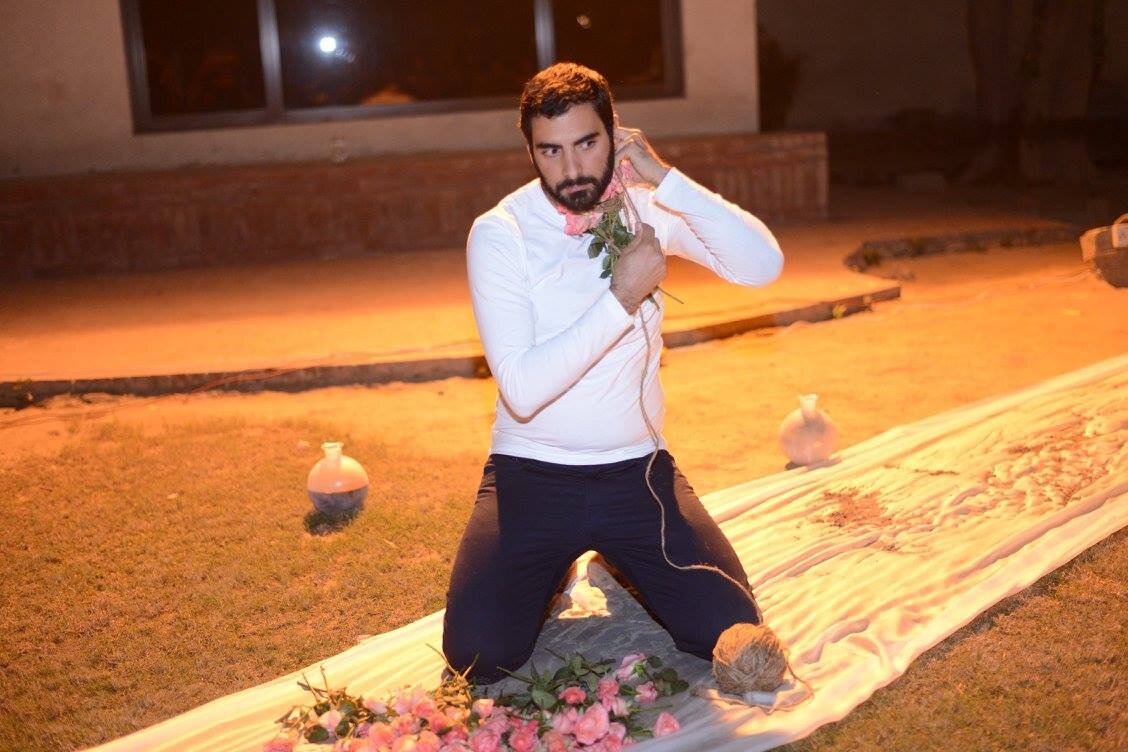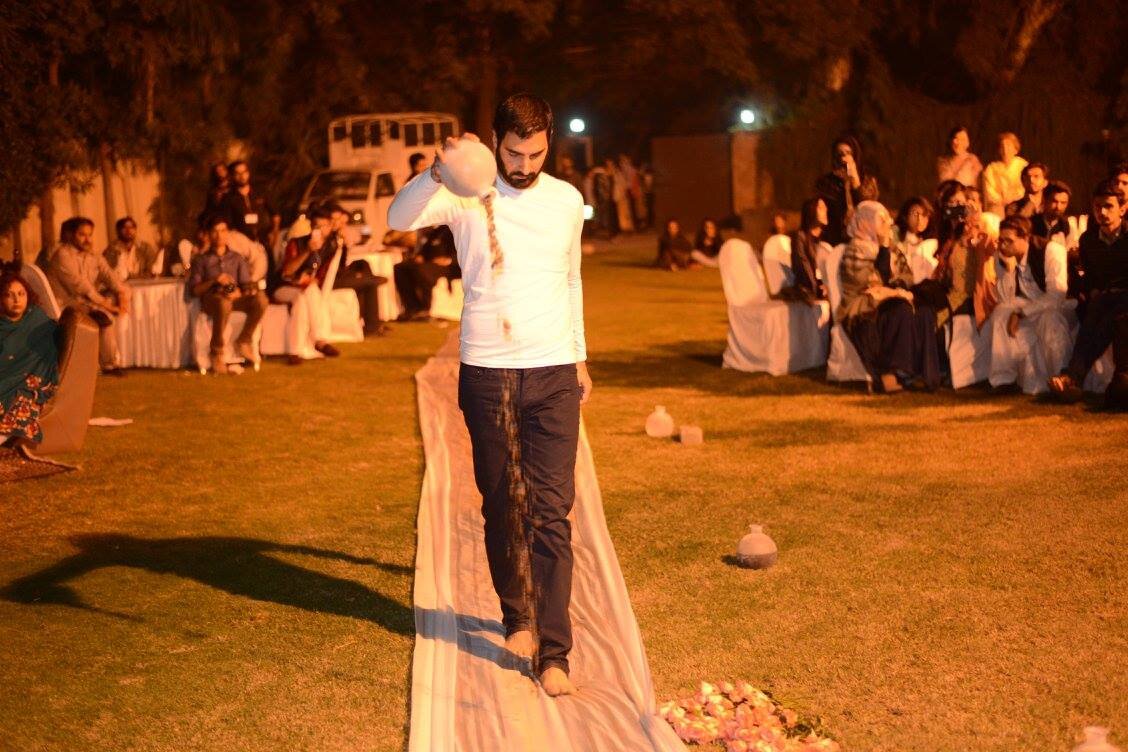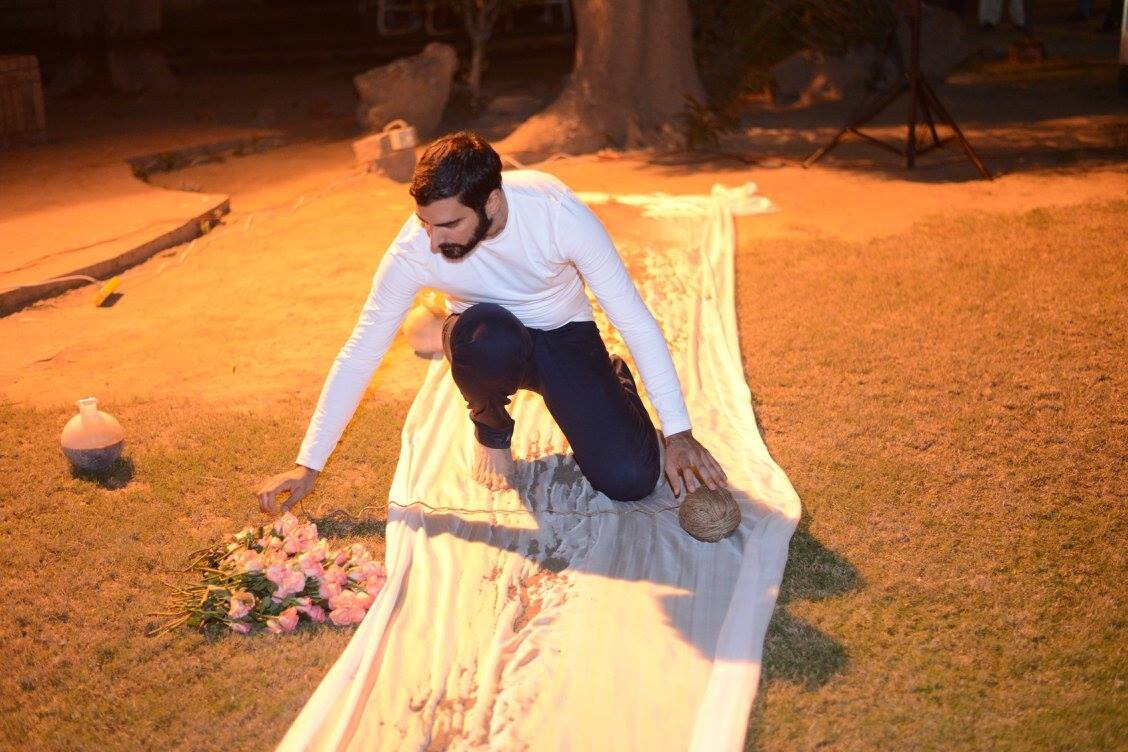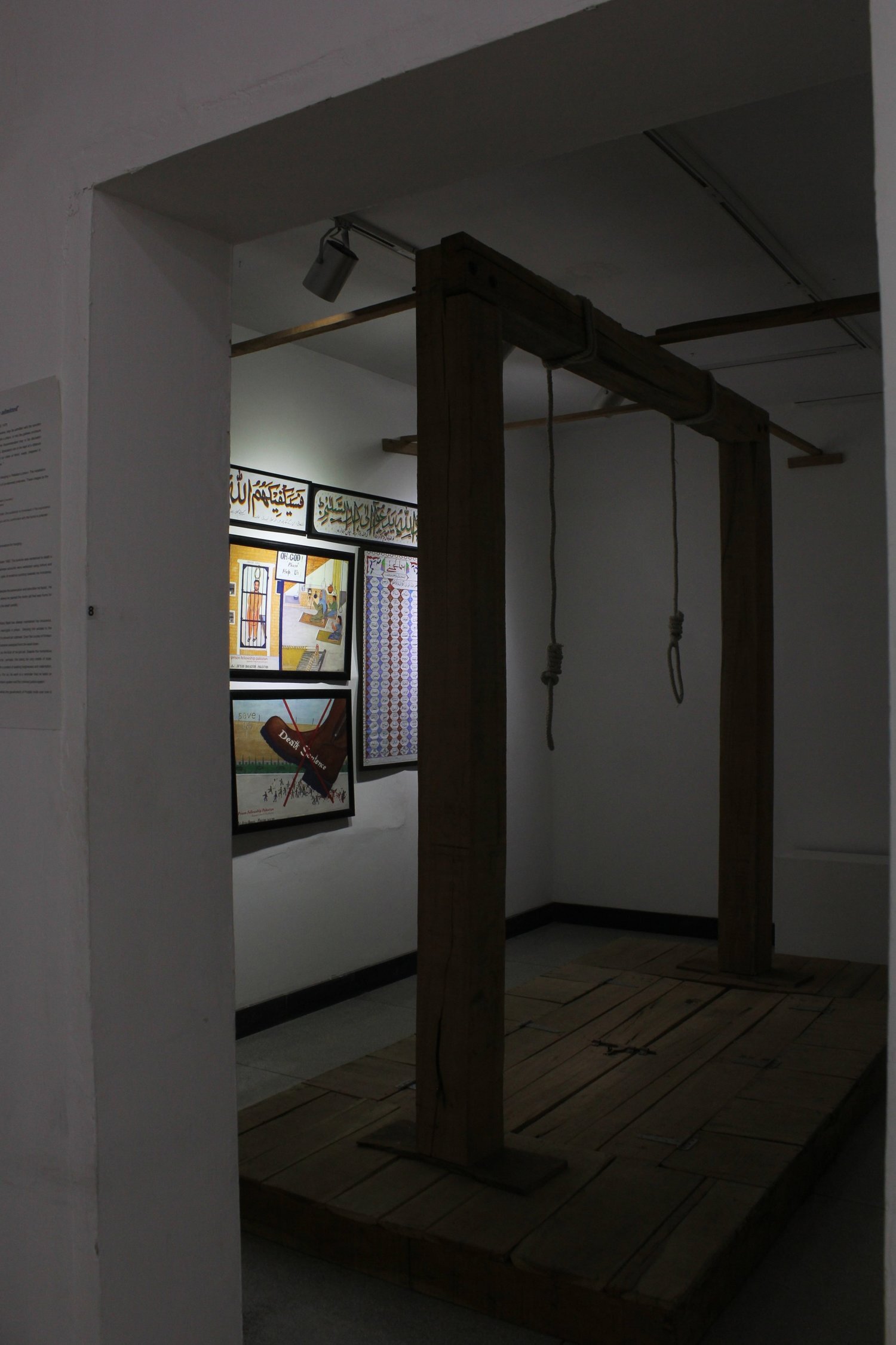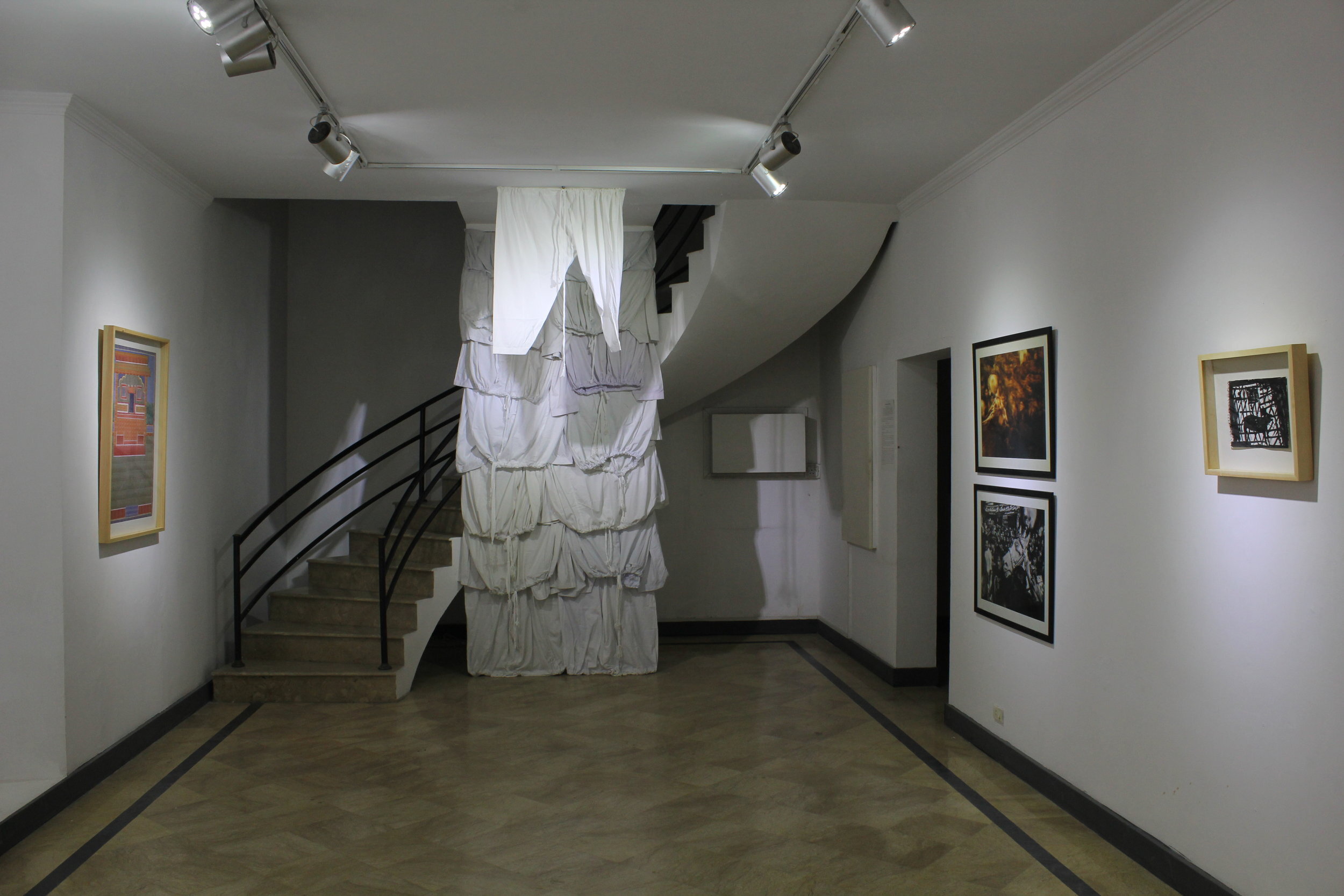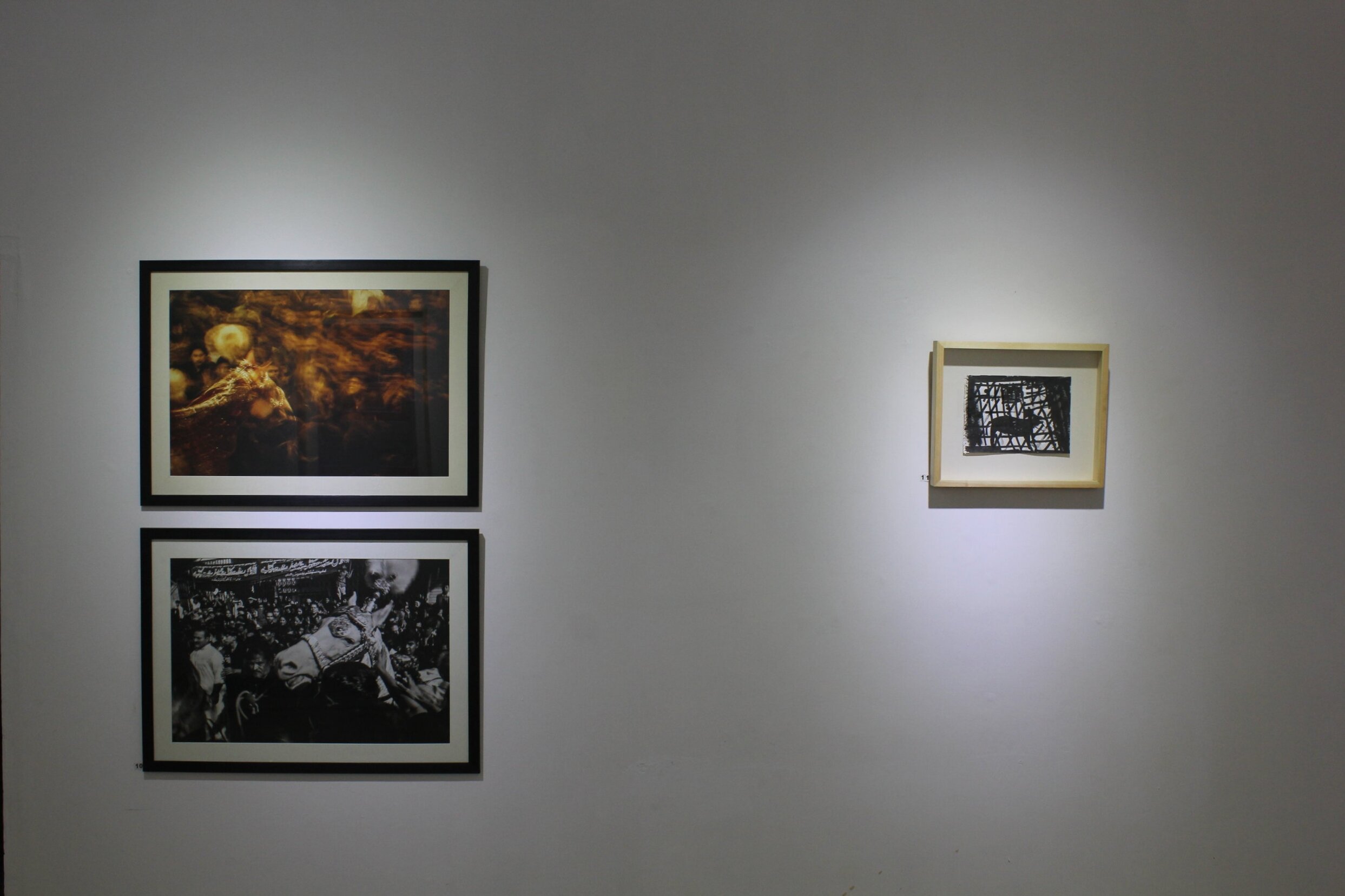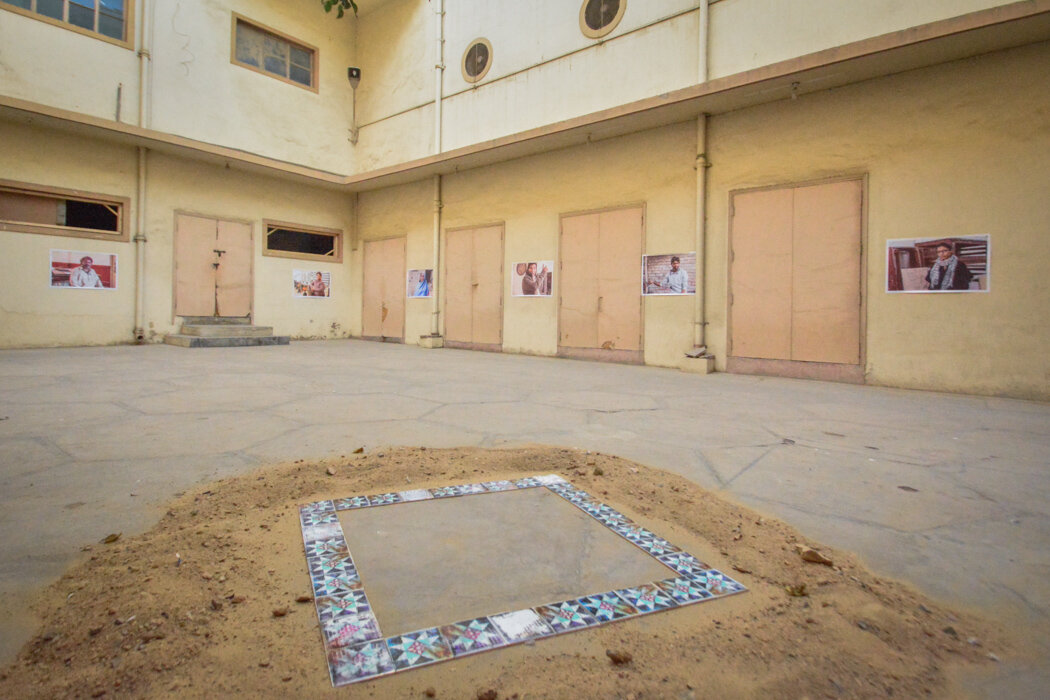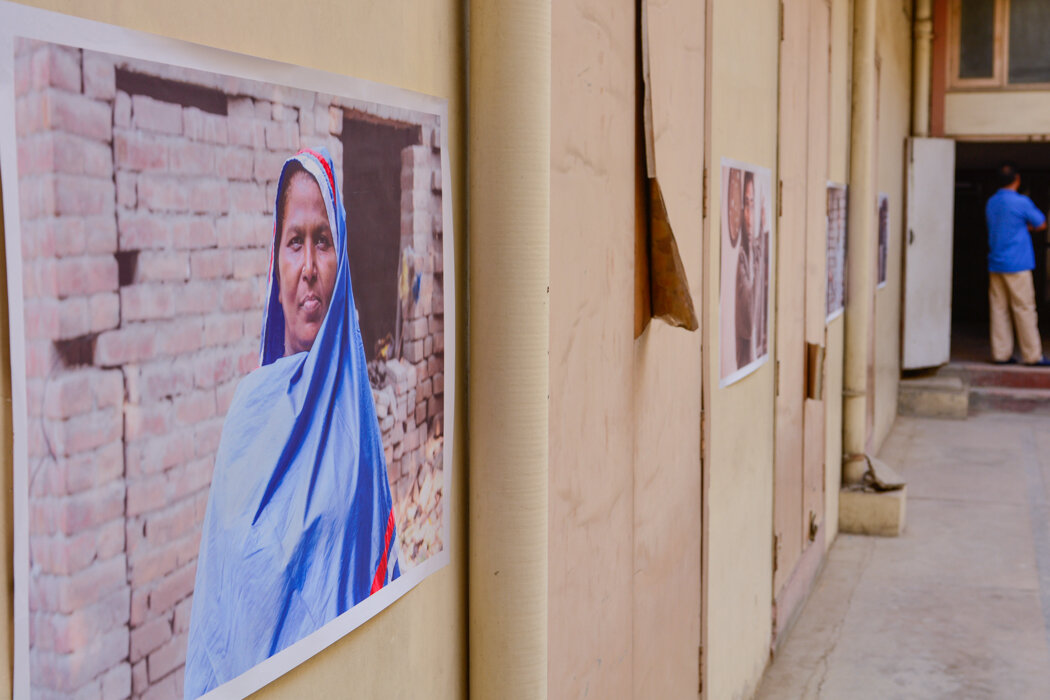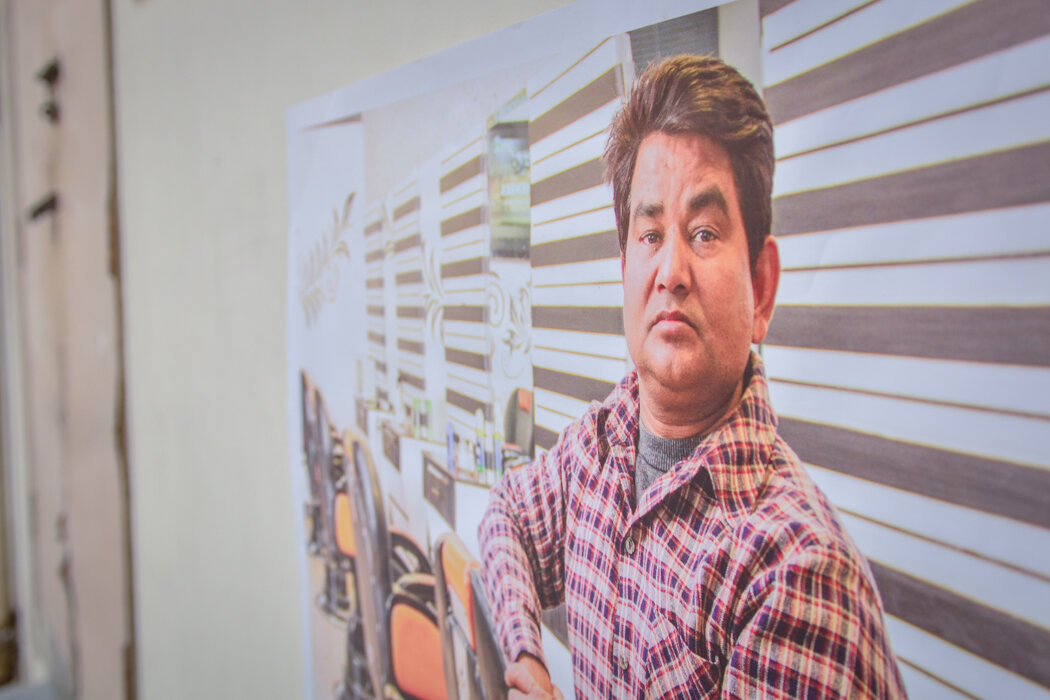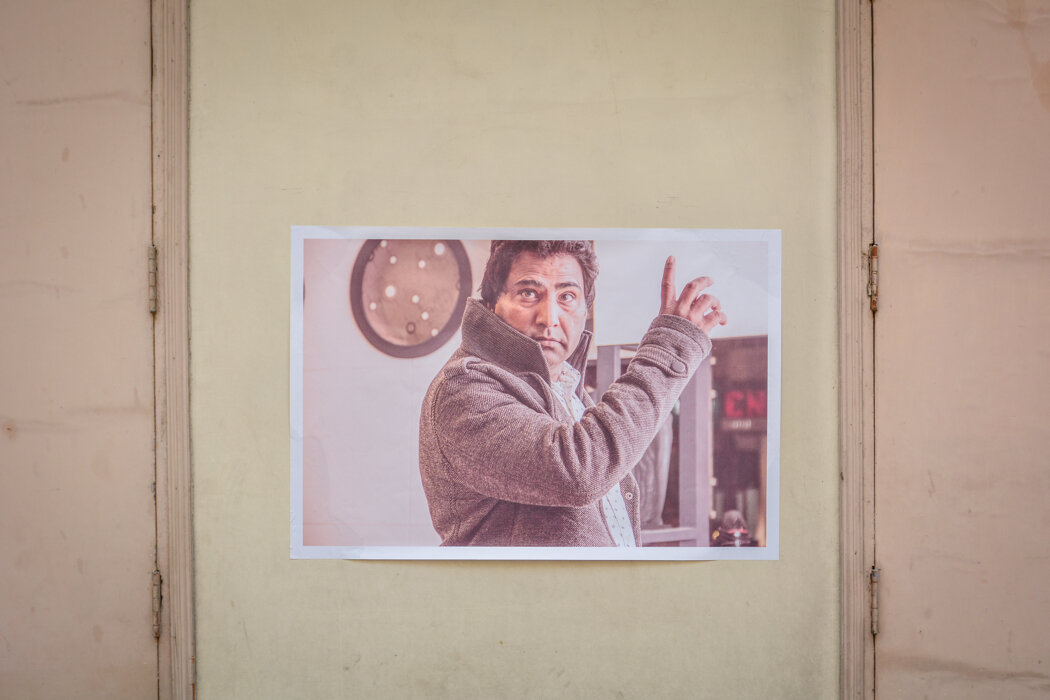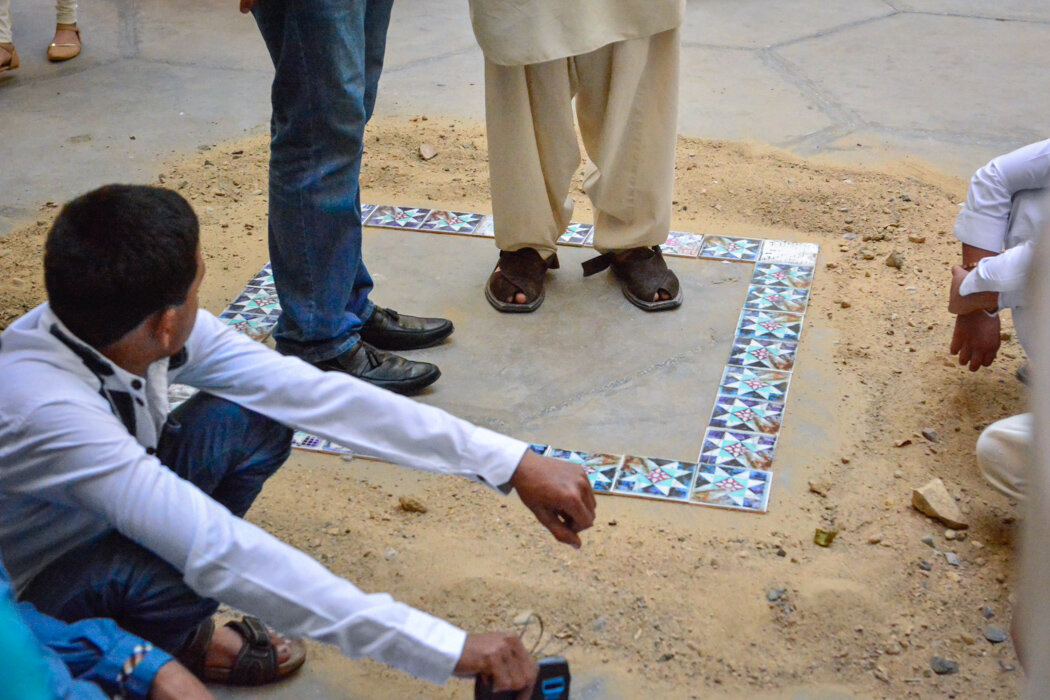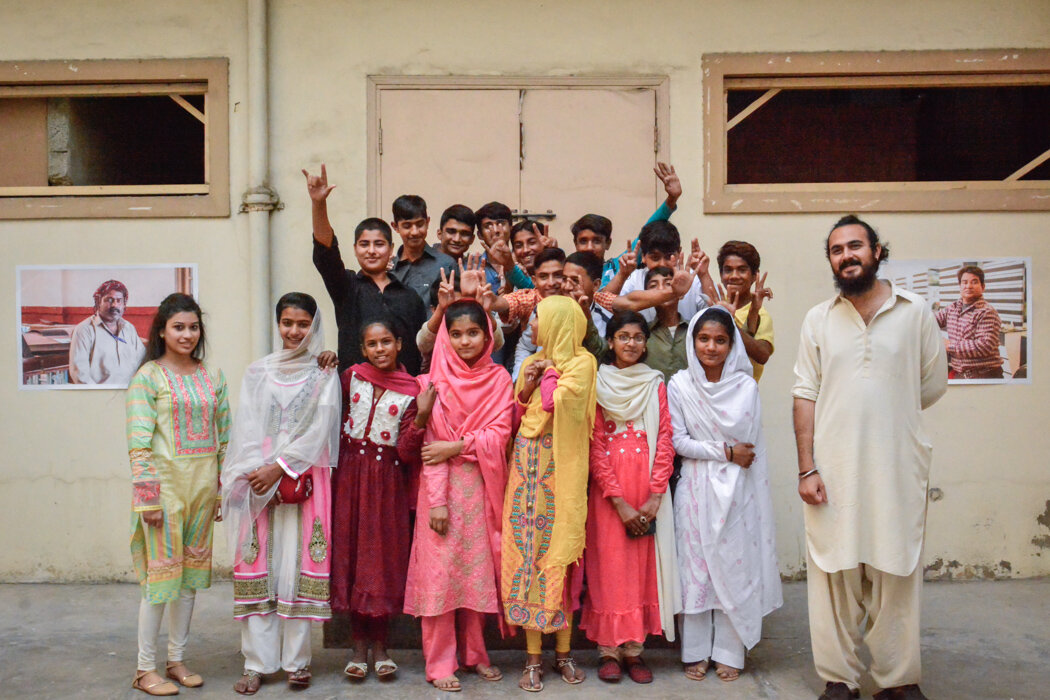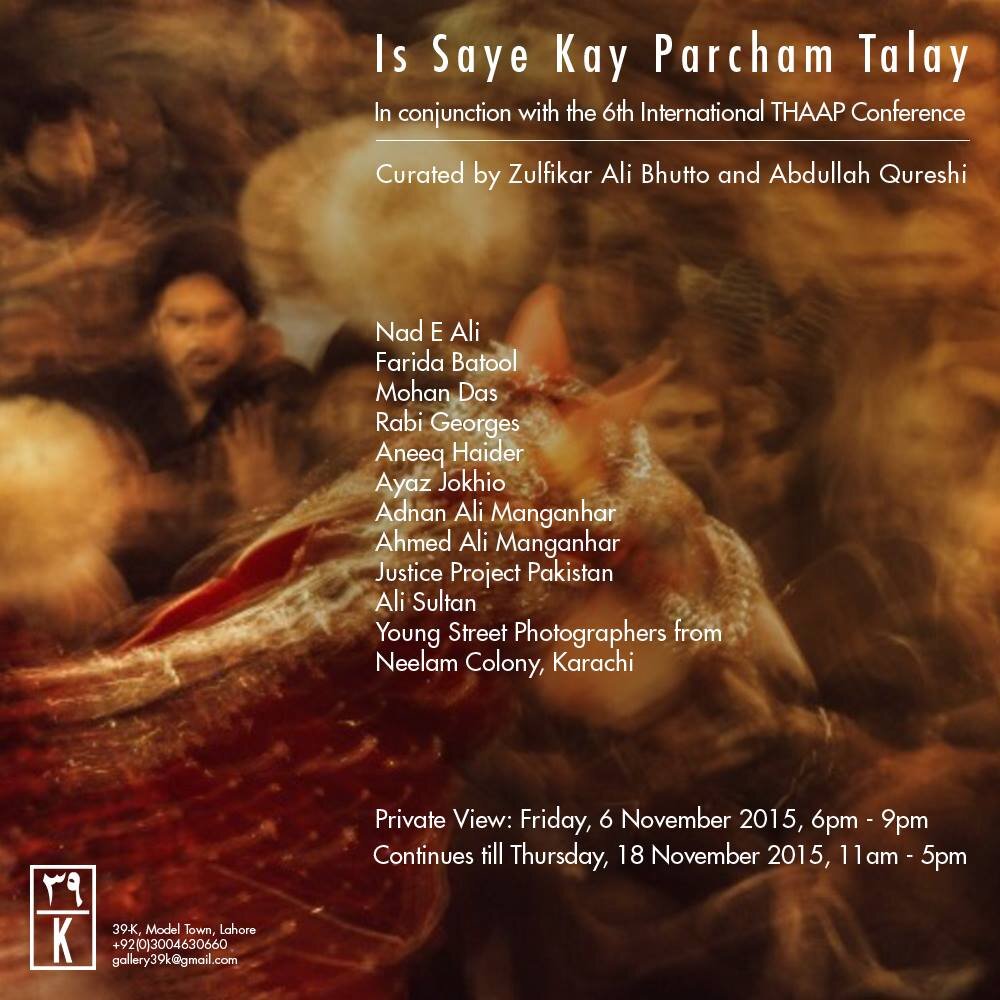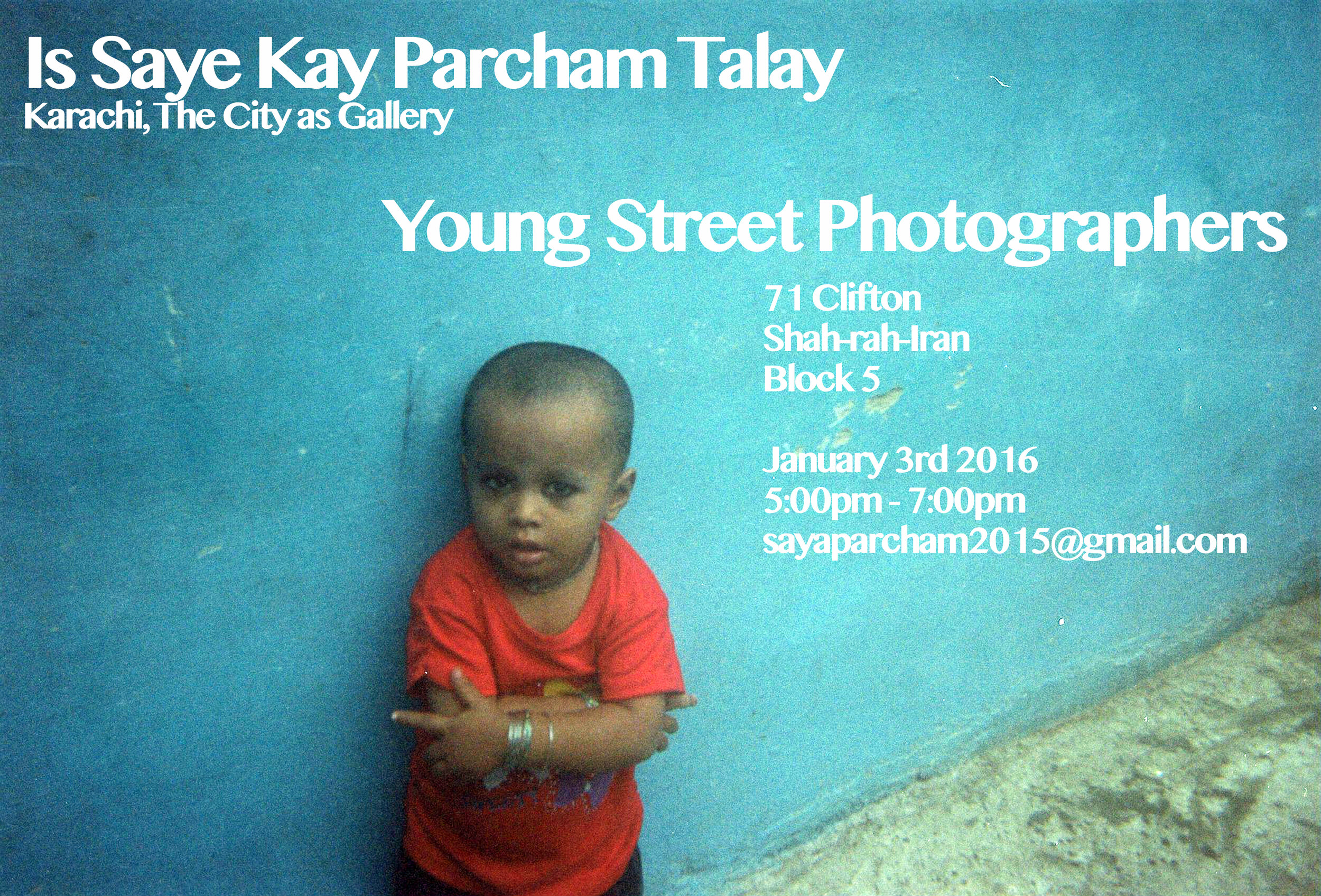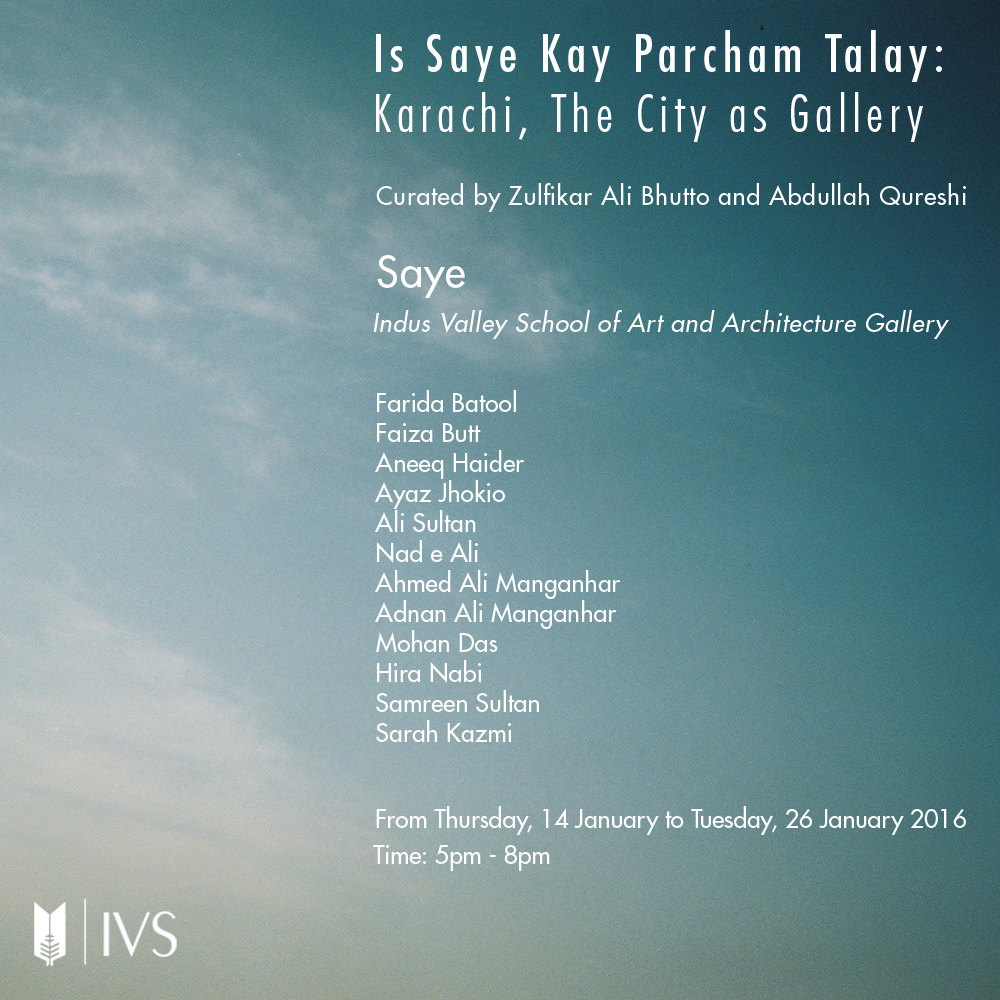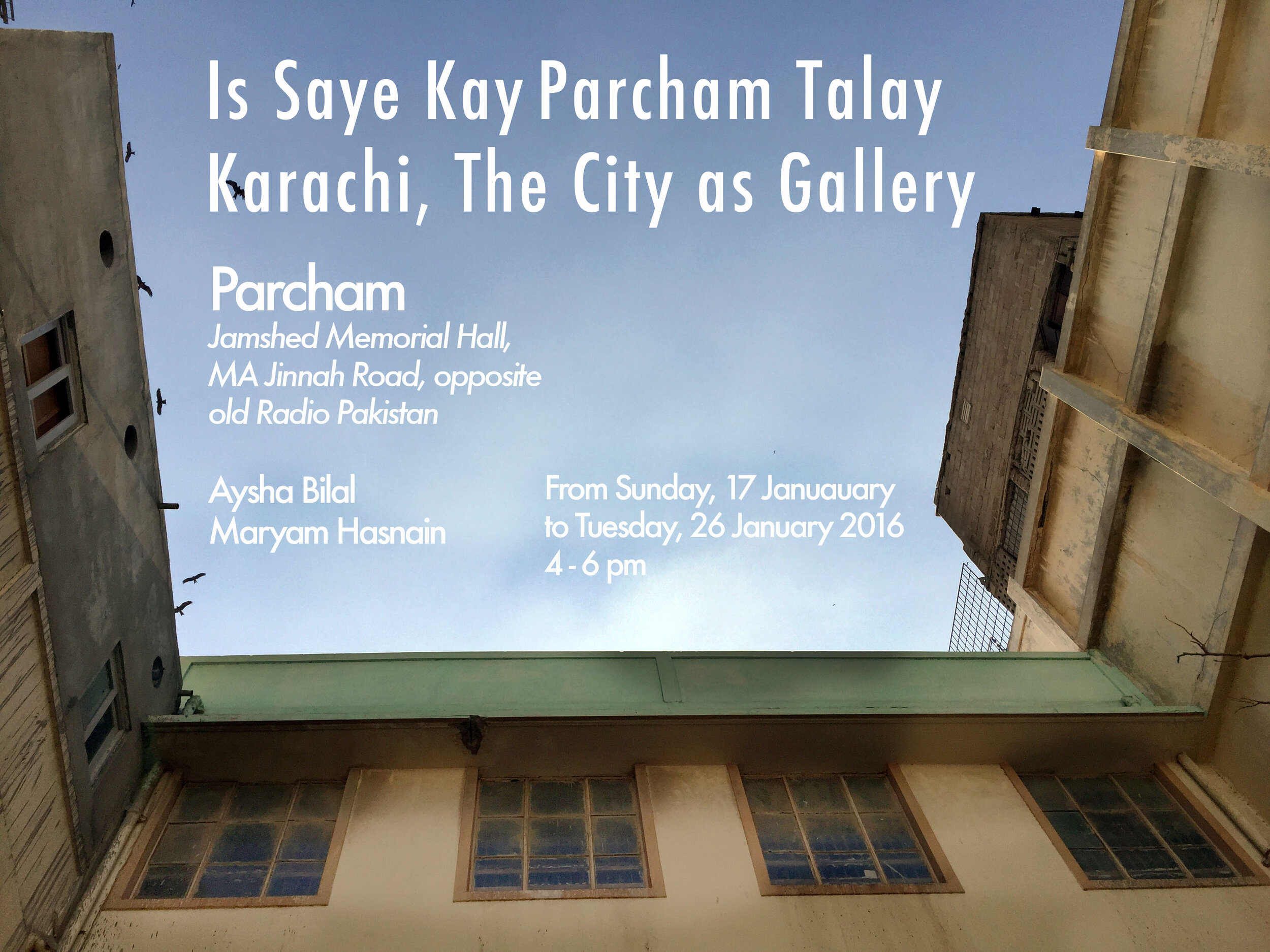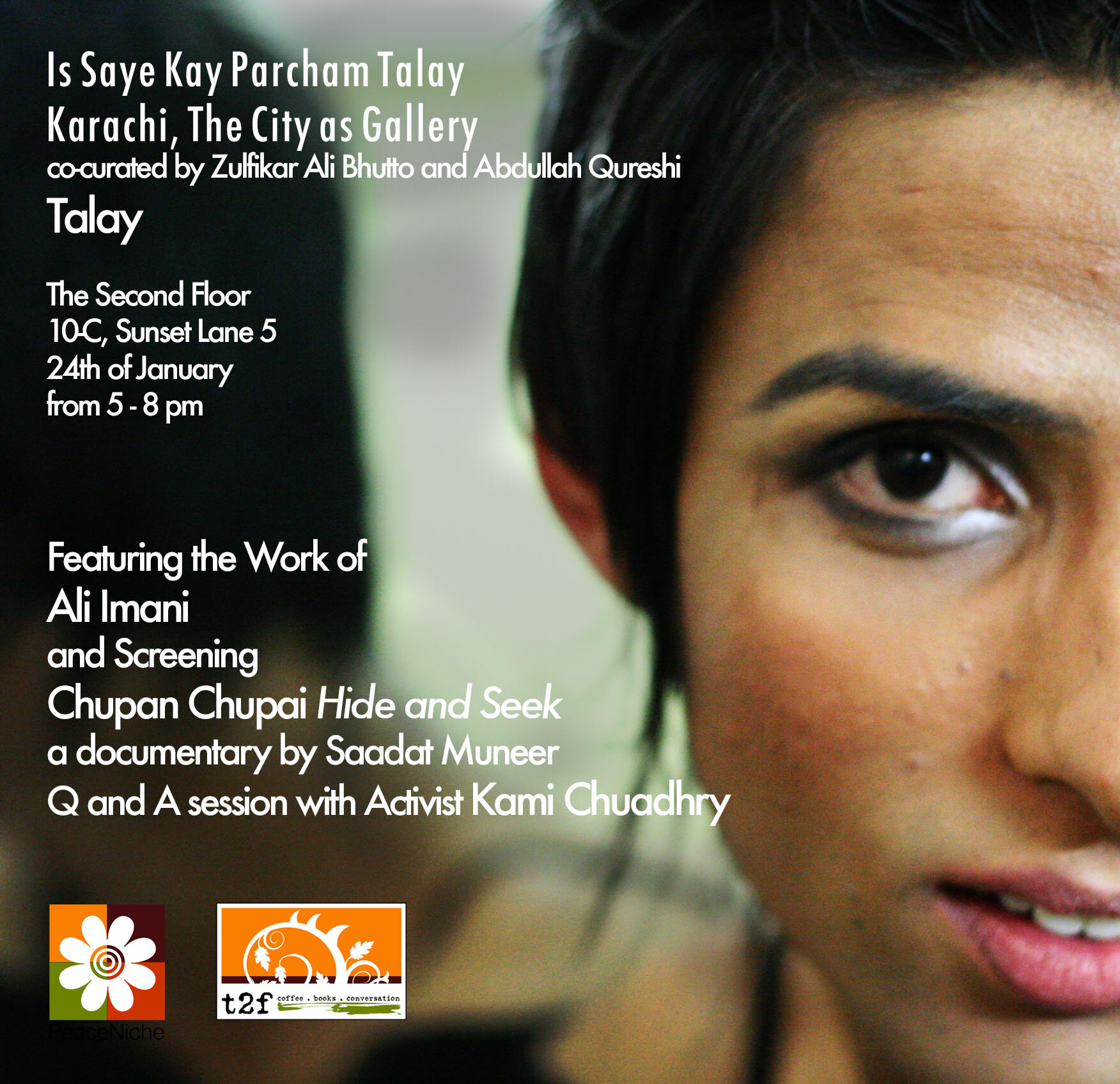اس سایے کے پرچم تلے Is Saye Kay Parcham Talay
The Shadow Over Our Flag
co-curated by Abdullah Qureshi and Zulfikar Ali Bhutto
Is Saye Kay Parcham Talay (Translation: The Shadow Over our Flag), a project co-curated by Zulfikar Ali Bhutto and Abdullah Qureshi, involved a series of exhibitions and talks in Lahore and Karachi. Tackling issues of marginalization and minority politics in Pakistan, the project looked at ethnic, religious and gendered communities in the country.
Starting in Lahore, the inaugural exhibition took place at Gallery 39K, in conjunction with the 6th International THAAP Conference, from 6 - 18 November 2015. Responding to political and social issues at the time, the presented artworks looked at a broad range of themes, including the Kasur incident (a child abuse scandal), violence against the Shite community, the role of the state and military, and failures of nationalism. Working with Justice Project Pakistan, the exhibition also included paintings by two prisoners on the death row penalty, and through the Young Street Photographers project by Bhutto, nearly 25 children photographers from Karachi’s Neelum and Shah Rasool Colonies.
Artists: Nad-e-Ali, Farida Batool, Mohan Das, Rabi Georges, Aneeq Haider, Ayaz Jokhio, Adnan Ali Manganhar, Ahmed Ali Manganhar, Justice Project Pakistan, Ali Sultan, and Young Street Photographers.
In Karachi, exhibitions and talks took place in 2016 at the following locations, all dates refer to opening receptions and screenings:
January 3 71 Clifton: Young Street Photographers.
January 14 Indus Valley School of Art & Architecture (IVS): Aneeq Haider, Faiza Butt, Farida Batool, Nad-e-Ali, Ahmed Ali Manganhar, Adnan Ali Manganhar, Ayaz Jokhio, Misha Abbas, Mohan Das, Hira Nabi, Samreen Sultan, Sarah Kazmi.
January 17 Jamshed Memorial Hall: Maryam Hasnain and Aysha Bilal.
January 24 The Second Floor (T2F): Ali Imani, screening of 'Chupan Chupai' by Saadat, and a talk by Kami Sid.
Text by Abdullah Qureshi
Syrian-German artist Rabi Georges performing at Gallery 39K in Lahore, Pakistan November 6 2018.
Justice Project Pakistan’s Installation showing the work of Khizer Hayat and Aftab Bahadur, Aftab Bahadur was hanged on June 10 2015, just a few months before this exhibition debuted. Bahadur was only 15 years old when he had been convicted in 1993 and spent 22 years on death row, below is his testimonial from death row the day before he died. May he rest in peace.
I just received my Black Warrant. It says I will be hanged by the neck until dead on Wednesday, 10 June. I am innocent, but I do not know whether that will make any difference. During last 22 years of my imprisonment, I have received death warrants many times. It is strange, but I cannot even tell you how many times I have been told that I am about to die. Obviously it feels bad whenever the warrants are issued. I start to count down the days, which is in itself painful, and I find that my nerves are shackled in the same way as my body. In truth, I die many times before my death. I suppose my life experience is different from that of most people, but I doubt there is anything more dreadful than being told that you are going to die, and then sitting in a prison cell just waiting for that moment. For many years – since I was just 15 years old – I have been stranded between life and death. It has been a complete limbo, total uncertainty about the future.
I am a Christian, and sometimes that is difficult here. Unfortunately, there is one prisoner in particular who has tried to make our lives more difficult. I don’t know why he does it. I got very upset over the Christian bombings that took place in Peshawar. This hurt me deeply, and I wish that Pakistani people could possess a sense of nationality that overrode their sectarianism. There is a small group of us here who are Christians, just four or five, and we are now all in one cell, which has improved my life.
I do everything I can to escape my misery. I am an art lover. I was an artist – just an ordinary one – from my early days, when I was first conscious of anything. Even back then, I was inclined towards painting, as well as writing verses. Although I had no training, it was just a gift of God. But after I was brought to jail I had no other way to express my feelings, as I was then in a state of complete alienation and loneliness. I began some time ago to paint all the signs for the Kot Lakhpat jail, where I am held. Then I was asked to do signs for other jails. Nothing in this world can give me more happiness than the feeling when I paint some idea, or feeling on the canvas. It is my life, so I am happy to do it. My workload is great, and I am exhausted at the end of each day, but I am glad of that, as it keeps my mind off other things.
I have no family to visit me, so when someone does come, it is a wonderful experience. It allows me to reap ideas from the outside world that I can then lay down on my canvas. Being asked about how I was tortured by the police brought back terrible memories that I turned into pictures, though it would perhaps have been better not to have to think of what the police did to try to get me to confess falsely to this crime.
When we heard the news about lifting the death penalty moratorium in December 2014, fear prevailed throughout the cells of the prison here. There was an overriding sense of horror. The atmosphere hung, gloomy, over us all. But then the executions actually started at Kot Lakhpat jail, and everyone started to go through mental torture. Those who were being hanged had been our companions for many years on this road to death, and it is only natural that their deaths left us in a state of despair.
While the death penalty moratorium was ended on the pretext of killing terrorists, most of the people here in Kot Lakhpat are charged with regular crimes. Quite how killing them is going to stop the sectarian violence in this country, I cannot say. I hope I do not die on Wednesday, but I have no source of money, so I can only rely on God and on my volunteer lawyers. I have not given up hope, though the night is very dark.
Aftab Bahadur
June 9, 2015
Courtesy of The Guardian
From left to right:
Ahmed Ali Manganhaar,
Young Street Photographers and Adnan Ali Manganhaar,
Aneeq Haider and Nad-e-Ali
Nad-e-Ali and Ali Sultan
Mohan Das An Eye Lid, Acrylic on Canvas, 28X28 inches photographed by Humayun Memon at the Indus Valley School of Art and Architecture, January 14, 2016
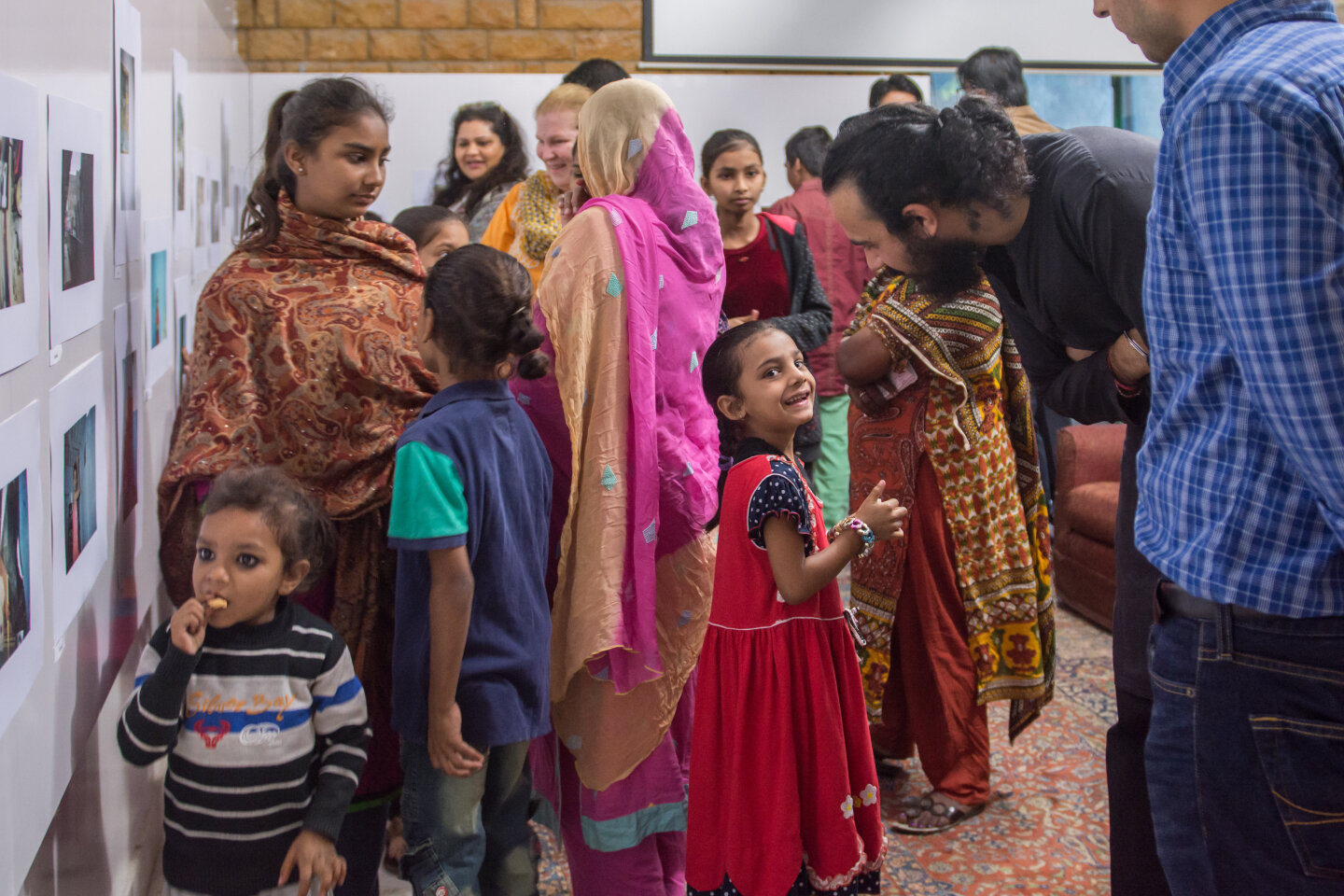
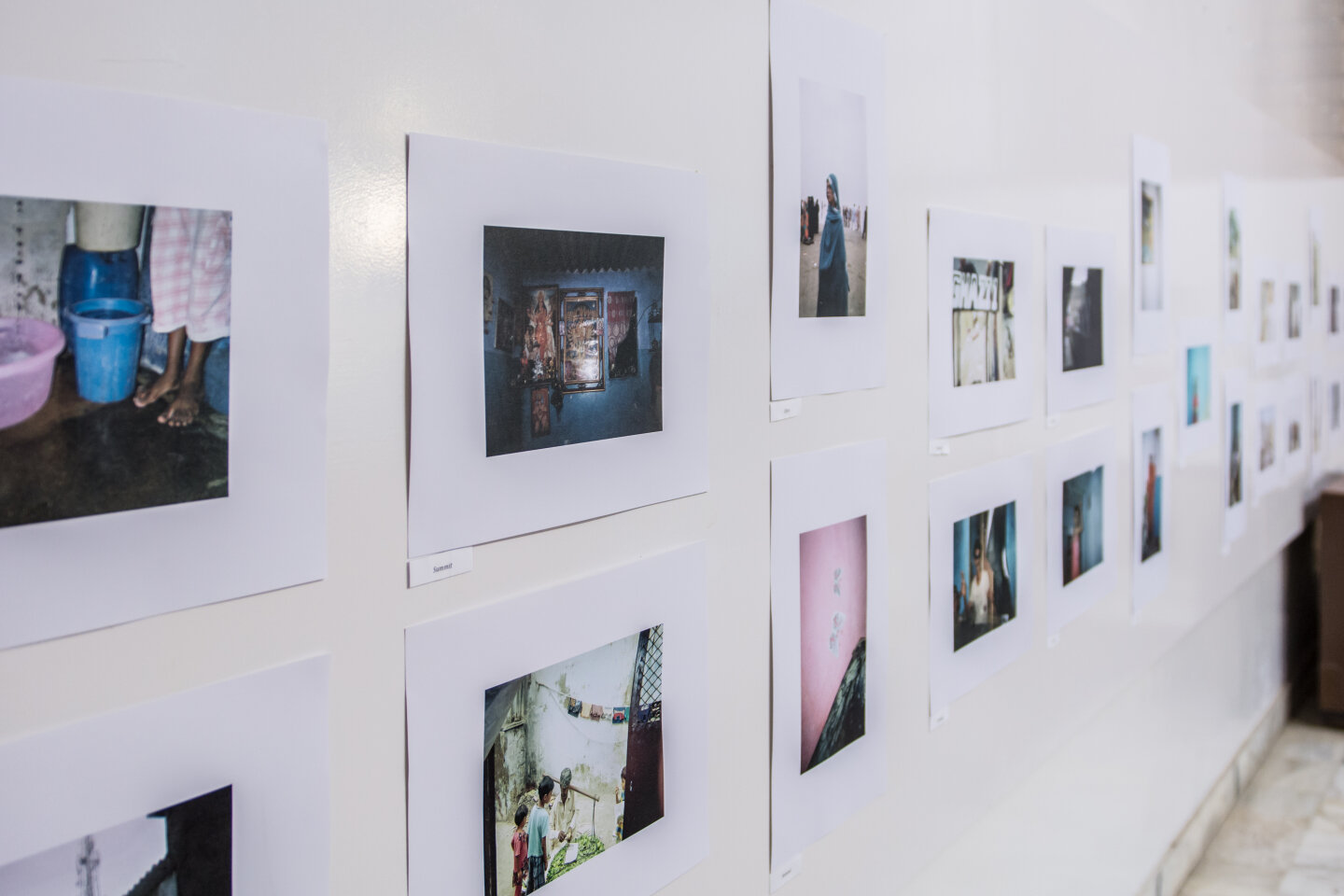
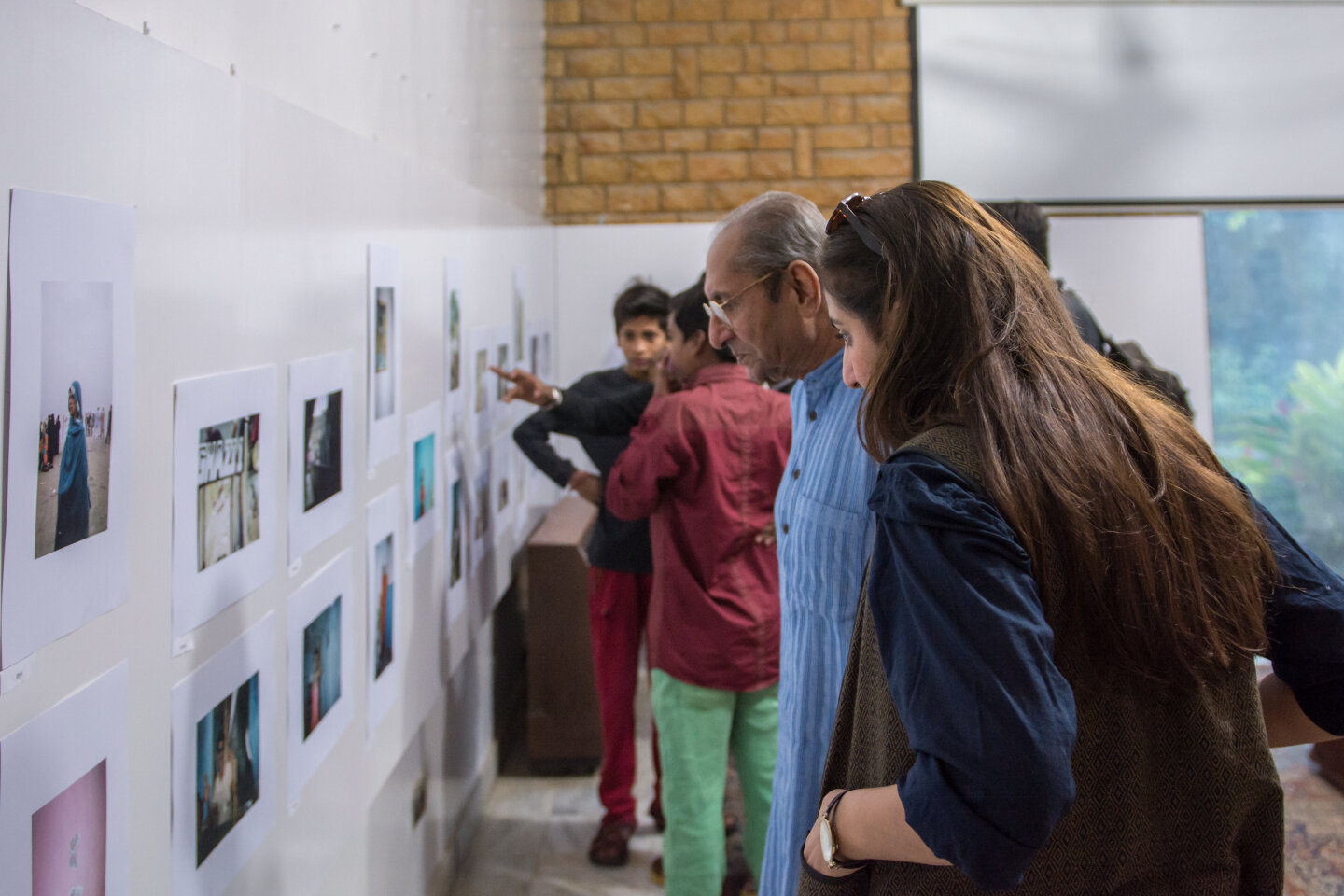

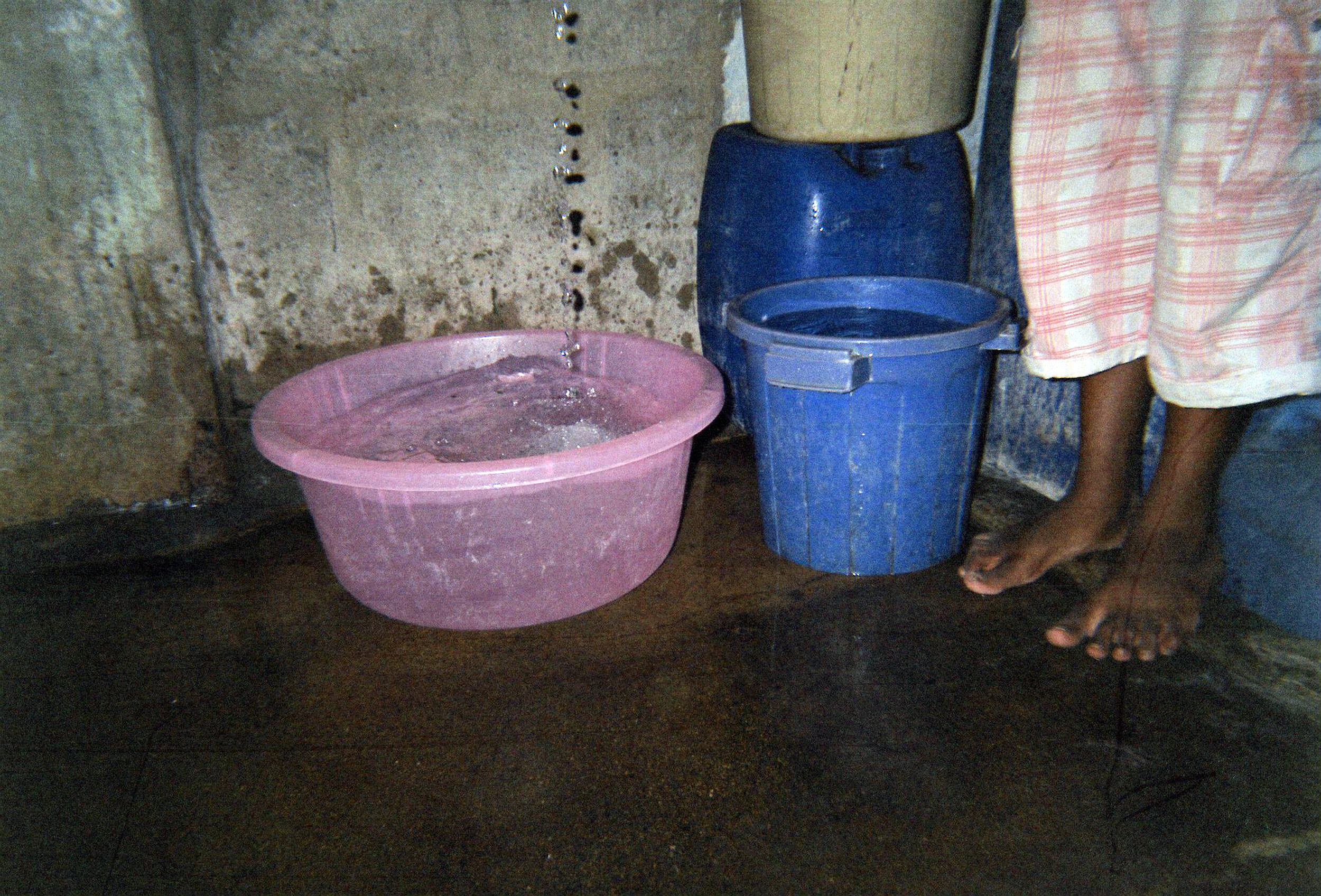
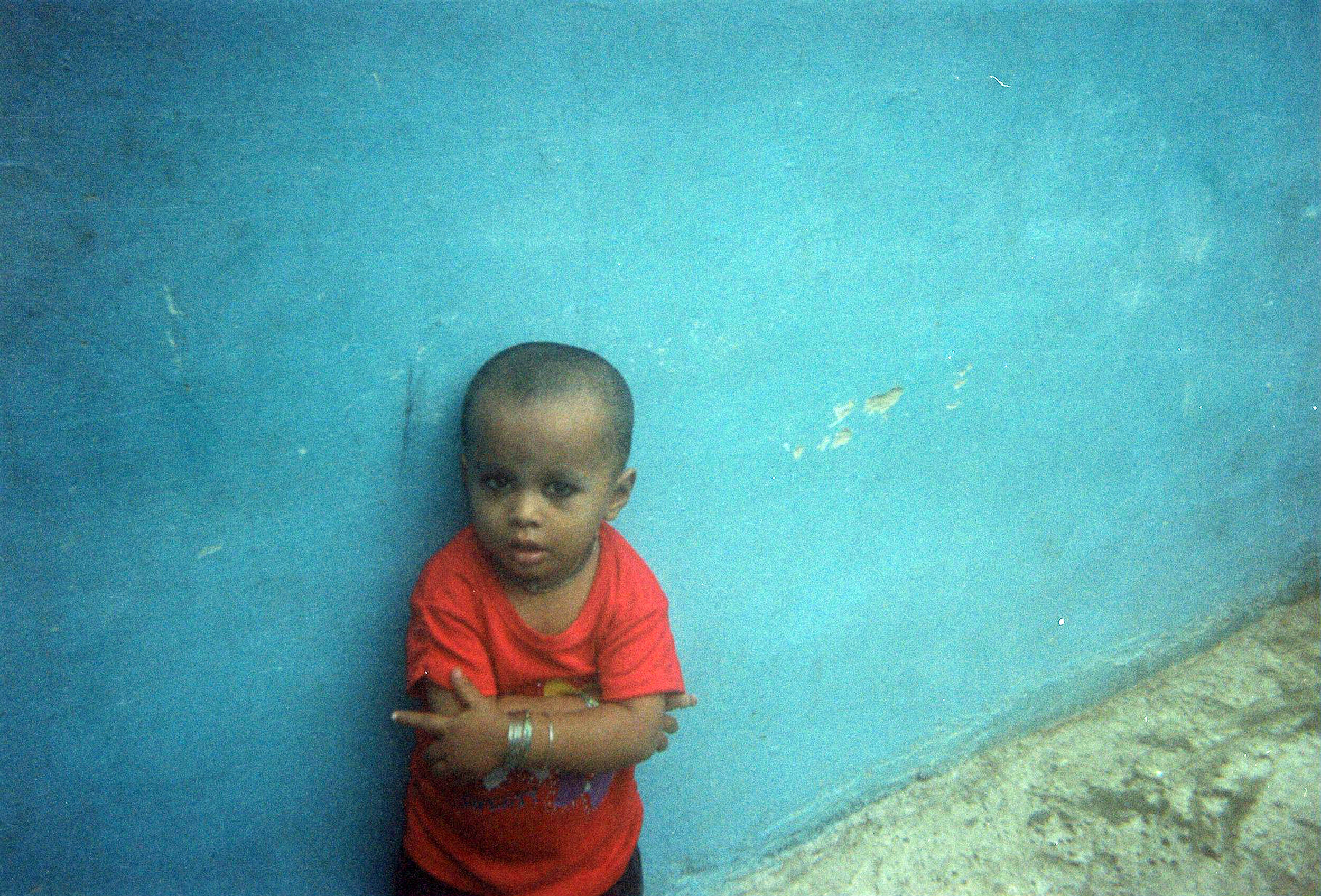
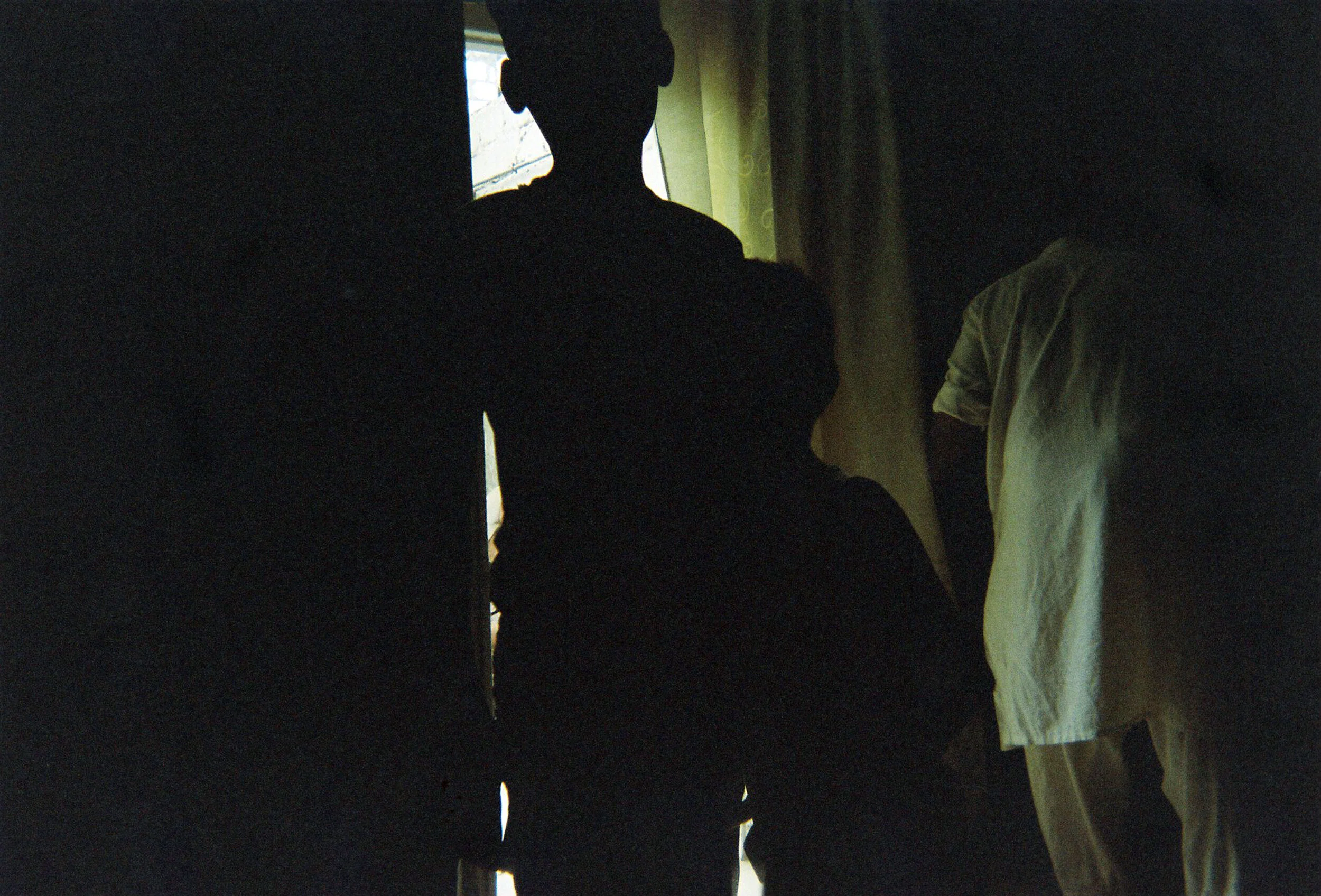
Is Saye Kay Parcham Talay’s Inaugural event in Karachi, a collection of photographs by Hindu and Muslim youth (between the ages of 6-18 years old) residing in Neelum Colony, Karachi, January 3 2016.
In order of appearance:
Images 1, 2 and 3 are from the opening at Gallery 71 in Karachi.
Images 3, 4, 5 and 6 are by Ayesha, Sonu, Hrithik and Peter Respectively. All images are 8x10” archival inkjet prints
Jamshed Memorial Hall showing the work of Maryam Hasnain (foreground) and Ayesha Bilal (background). All documentation is by Humayun Memon.
Maryam Hasnain’s work was in direct response to an area in downtoan Karachi knwon as Aram Bagh, previously Ram Bagh before partition. The area contains a the ruins of a Skih temple (Gurdwara) that was a refuge for Sikh’s feeling Pakistan during partition. Today the sight lies in ruin and hidden from view., Maryam’s work attempts to highlight this historical revision.
Ayesha Bilal’s work documents and brings visibility to Christians living and working in the city of Lahore through large portraits often placed in public spaces.
PostCards
All Postcards were designed by Shoab Masood
